When did Petra become a ruined city Dan Gibson provides a survey of earthquakes in Petra, until the end of the city.
TRANSCRIPTS
\ Hello I am a Dan Gibson, and today’s video will answer the objection that Petra was in ruins during the founding years of Islam and could not have been the city that is described by the early Islamic writers.
\ This is actually a very good challenge, because if you are using resources and references that are a little older you might easily come to this conclusion. In fact, for years, it was assumed that Petra fell into ruins in the 3rd or 4th centuries and that it was not functioning during the time of Muhammad and the founding years of Islam.
Listen to this……. From Ian Browning’s book: Petra, written in 1973 and revised and updated in 1982, Page 58
There is in the Urn Tomb an inscription dated A.D. 447, painted on the wall, which records the consecration of the tomb as a church by Bishop Jason. Much in the same vein, there are crosses scratched on the interior walls of the Deir (which might be taken as denoting consecration marks) But by then the population was becoming thin on the ground: the city was not yet abandoned, but any prosperity it had known had long since vanished. Even by the end of the fifth century there were still some people eking out an existence amid the ruins; and there were still metropolitan bishops presiding. This seems a contradiction, a centre of Christian activity with only a meager congregation, but Mr. Peter Parr is surely right when he wrote, ‘But I do not think these bishops can have had many local parishioners, and I suspect that the survival of the bishopric may have had more to do with the Church’s proselytizing amongst the Northern Arabian tribes than it had to do with a large Christian community in Petra itself .’
That was written only 30 years ago. And that was what people imaged Petra was like during the founding years of Islam. For them it was obvious that the name ‘Petra’ did not appear in the Islamic records, so therefore Petra must have no longer existed during the founding years of Islam.
So it is no surprise that people object to my findings, claiming that Petra was in ruins at the time. Thirty years ago that is what people thought.
But all of this changed in 1993. The discovery of the Petra Scrolls changed our view of Petra during the 5th and 6th centuries AD. In 1993, Hamoudi al-Bedoul, a local Bedouin, discovered the first remains of carbonized papyrus scrolls while excavating at a Byzantine Church in Petra. All together 140 scrolls were retrieved from the church ruins. They were not in very good shape, because the church had been burned. Because of their poor shape it took several years for the archaeologists to decide how to unwrap the scrolls, and how to process them.
The scrolls were charred black, and some scrolls were broken into many pieces. A team of experts from Finland worked at carefully opening the scrolls and photographing them and getting the best photographs they could possibly get.
Those photographs were made available to experts around the world who mulled over the contents of the scrolls, translated them, and wrote various papers and expressed various opinions.
In the year 2002, ACOR, The American Center for Oriental Research published a five volume collection called the Petra Scrolls. I have my own personal copy of the five volumes here behind me, and over the last couple of years I have enjoyed working my way through them, and also reading some of the opinions and comments of various experts who have also gone through this material.
Here are some thing we should notice:
First, the scrolls belong to one extended family. They are the personal legal documents of that family. They are the kinds of things you might stick away in a safety deposit box, and not look at for years. But you don’t want to get rid of them, because they might be useful some day.
Second, even though the scrolls were found in a church, they are not church documents. This is NOT about who was baptized, who the priests were, or how the church was organized. No, this is about one family’s legal records.
Third, what is of interest here is not so much what the scrolls say… but about the use of language: The names that are used, the people that are mentioned, the expressions that people used, and what it tells us of the daily life of the city.
Fourth, the dates of these scrolls are very important. These scrolls were written down during the time that the prophet Muhammad was a young man. That is what makes them so important to our study of the Qiblas. Here we have a very narrow window back into time, to the exact place that the archaeological records indicate was where the prophet Muhammad lived as a young man. But this is an extremely narrow window. It is all about one family. It is a Christian family, and these legal documents that were found in the Christian quarter of Petra, in the back room of a church. We must not expect them to throw light onto the pagan side of the city or the greater picture of what is going on.
Here is a map of Petra. It is in a valley. The Christian churches are on one side. The Christian tombs are in the north. The rest of the city was pagan, at least until Muhammad came along. There are temples to Dushara, Al-Uzza, and others. And of course, the foundation of the great altar that Abraham and Ishmael built together, which later was known as the Ka’ba, or just ‘The Cube.’ None of these structures were ever connected to churches, or converted into churches. There is little evidence of Christianity in the center of the city.
Down in the south are the sites that would be later associated with the Muslim pilgrimage. At the time these scrolls were written, they were pagan sites. There were camping spots for pilgrims to Petra. There was a pillar in the middle of a huge courtyard that pilgrims could throw stones at. There was a slippery slope that pilgrims could climb to the top of the mountain to meditate. Large crowds of pagans could gather and face the sunset. Even Christians could gather, as there was also a Christian church there for the Christian pilgrims. Jews could gather. For the top of that mountain had a mosque, a church, and the tomb of Aaron the brother of Moses. It was a very religious place.
But, outside of the church on-top of the mountain, and the Christian quarter, by-in-large the city of Petra still seemed to have remained a pagan city. The Byzantines ruled from a great distance. The area around Petra and north was controlled by Christian tribes who were client rulers for the Byzantines, but the Byzantine army was not in Petra. In fact, there is no evidence of any army barracks in Petra.
This really was the backside of the Byzantine Empire, on the edge of the desert. A few scattered churches had been built in Arabia, but overall, all of central and north Arabia was still in the hands of the pagans.
Now some people have assumed that the city of Petra was totally in ruins during the lifetime of Muhammad. This is simply not the case. After every earthquake of 551 CE, 19 years before Muhammad was born, people dug themselves out of the ruins and rebuilt their homes. Any destruction from the 551 AD earthquake was mostly cleaned up, just as the city recovered from the earthquake of 363 AD. So when the Petra Scrolls were written, there was a thriving city, and people were active in the area all around Petra.
The records of this Christian family record how people bought and sold land, and paid taxes throughout this whole period. Anyone who says that Petra was all in ruins is being influenced by the old mindset, and has not been exposed to the discoveries archaeologists have made in the last 30 years.
The rebuilding of cities after earthquakes was a regular thing everyone to two hundred years. Sometimes the damage was slight, sometimes it was substantial.
As you will soon see, there was a long history of earthquakes in the Petra region. We do not have a record from the early years of Petra’s history, so I cannot give evidence from the Nabataean era.
The first well recorded earthquake in Petra took place in 363 AD: A fourth century Syriac letter attributed to Bishop Cyril of Jerusalem discusses major earthquake destruction at Petra on May 19, 363 AD. The residential parts of the city continued in use afterwards, but it seems that some of the civic buildings ceased to function for a while. It was during this time that the Urn Tomb in Petra was transformed into a church.
In the early 1990s, archeologists uncovered the remnants of a Byzantine era church in Petra with mosaics and the Petra Scrolls that I mentioned. In the scrolls, the last reference to a resident bishop is to Athenogenus, a nephew of Emperor Maurice. Coin evidence from around the Colonnade Street shows that shops there were still much in use during the fourth and fifth centuries. During the fifth and sixth centuries, many of the forts that formed the Roman-Byzantine security belt east of Petra were abandoned. Most likely because any military threat was coming from Persia, not the Arabian desert. It is thought that many of the wealthy and middle class Nabataeans left the city before the 363 earthquake, and that mostly the poor and low class were left. It is also thought that many non-Nabataeans migrated to Petra in those years, so that the population was no longer thought of as ‘Nabataean.’ The city was mostly a provincial capital, reliant on local agriculture and trade.
The first record of a breach in the Ma’rib dam is found in a Yemeni inscription from the second half of the fourth century AD. Then in 542 AD, just nine years before the 551 earthquake in Petra, the Ma’rib dam was breached again, and people started to emigrate out of Yemen. Eventually over 50,000 Yemeni’s would emigrate north, populating Medina, and some moving into Egypt,, and then farther across North Africa, all the way to Morocco. I say this, because this was happening just before Muhammad was born, and it influenced the way Islam would develop.
Then comes 551CE. On July 9, 551 AD, a massive earthquake struck Beirut, but it also devastated parts of Petra reducing some of the city centre to rubble. It used to be thought that at that time the bishops departed, bringing to an end the existence of a city proper, leaving only a scattered small population. But that has been disproved.
From the Petra scrolls we know that people still occupied the city after the earthquake of 551 AD, which, as I said was only 19 years before the birth of Muḥammad.
The Islamic records tell us that the people of Mecca were digging in the earthquake rubble after the 551 earthquake when they came across an inscribed rock, which they could not read. Ibn Hisham records the story:
*I was told that Quraysh found in the corner a writing in Syriac (Nabataean). They could not understand it until a Jew read it for them. It was as follows: “I am Allah, the Lord of Becca, I created it on the day that I created heaven and earth and formed the sun and moon and I surrounded it with seven pious angels. It will stand while its two mountains stand as a blessing to its people with milk and water*” (Ibn Hisham 44)
Up until this time, no one knew that an early name for the Petra Valley was Becca.
The second place we find the name Becca, is in the Qur’an in Sura 3: 95-96: Allah speaks truth. So follow the religion of Abraham, the upright. He was not of the idolaters. Behold, the first Sanctuary appointed for mankind was that at Bakka, a blessed place, a guidance to the peoples; Wherein are obvious signs such as the place where Abraham stood up to pray; Whoever enters it is safe. And pilgrimage to this House is a duty unto Allah for mankind. But the Islamic records also tell us that an early name for the place where Abraham sent Hagar was known as Hijr or The Rock.
We read in Tabari Vol 2.73: “Abraham directed Hagar and Ishmael to go to al-Hijr, and he settled them down there.”
So both names, Becca and Hijr refer to the valley where Abraham sent Hagar. And where Abraham later set up a great altar to God, known as the House of God. But the name Hijr is also associated with earthquakes.
Taken from a ḥadīth, reported by Bukhari on the authority of Ibn ’Umar, that the Prophet said to his companions when they passed through Al-Ḥijr. This is the same place where Abrajam settled Hagar, known as Hijr. In thus hadith it is also known as the dwellings of the people of Thamud. “Do not go without weeping to the places of burial of those who are undergoing torment. But if you cannot weep, then do not enter these places lest what befell them should befall you.”
Next we come to the earthquake of 660 CE or 40 AH: The Arabic accounts of ’Umar’s visit to Jerusalem are discussed by Bussee, “‘Umar in Jerusalem.” The monk Anastasius of Sinai informs us that after that visit, and an earthquake around 660 CE, he witnessed clearing work being under¬taken on the Temple Mount.
This may have referred to a cleanup of the 551 earthquake, but that is unlikely as it would have been one hundred years earlier. So it appears that there was an earthquake in Jerusalem at 660 CE or 40 AH, but this is not recorded in the Islamic records, possibly because the Muslim community was involved in a war with Mu’awiyah taking over the Caliphate, and moving the capital city to Damascus. Perhaps the earthquake at that time played a part in his wanting a new capital.
Fifty four years after this in 713 94 AH another great earthquake hit Petra, and indeed the entire Mediterranean seacoast was affected. Even the mosque in Jericho was destroyed, so much so that it was never rebuilt. Petra was never rebuilt after this and it passed from history. After this massive earthquake, the Umayyad buildings in Amman needed to be rebuilt. Al-Ṭabarī notes that this massive earthquake affected much of Syrias well, so it seems Mu’awiyah did not manage to escape the affect of earthquakes.
Then 34 years later, in 746 CE 128 AH another strong earthquake destroyed cities in Syria and Jordan. The Madaba Map had fallen to the fate of Muslim zealots sho removed many from the church under Umayyad ruler Yazīd II, Muslim zealots removed many of the pictures in the church and damaged the map, but the church itself crumbled in the earthquake, thus preserving the remains of the map under rubble.
The city of Ḥumeima was a Nabataean town on the incense route, some 40 kilometers south of Petra. It flourished during the Nabataean Empire and was not abandoned until the earthquake of 746 AD when much of the city, and also Petra were destroyed. The Ḥumeima site has five Byzantine churches, two Umayyad-Abbāsid farmhouses, a large early Abbāsid fortified house and a mosque that served as the residence of the famous Abbāsid family.
So while Petra endured many earthquakes, each time it was rebuilt, until the final destruction in 746 CE 128 AH . This is 128 years after the death of the prophet. There is plenty of time for an Islamic story to take place in Petra, and for a Petra-explanation of the founding of Islam.
So in conclusion, Petra was still a vibrant city when Muhammad was a young man. It was not until 128 AH that it fell into ruins. So, anyone arguing that Petra was in Ruins during the time of Muhammad is simply ignorant and hasn’t read modern studies.
I am Dan Gibson and this has been another Question and Answer Video.
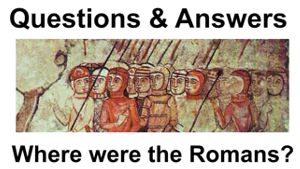

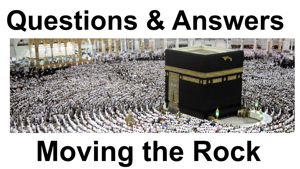
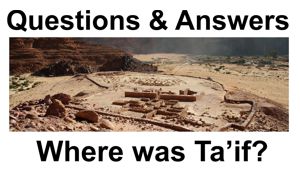
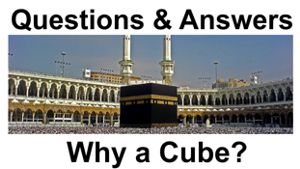

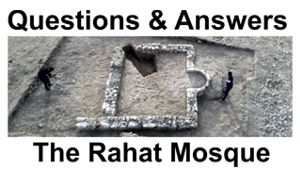
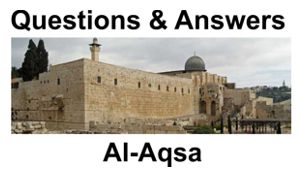
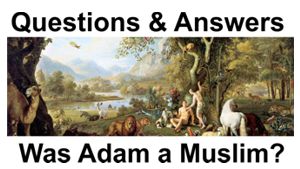
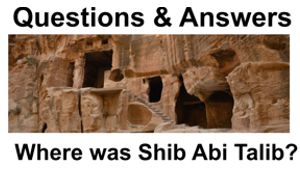
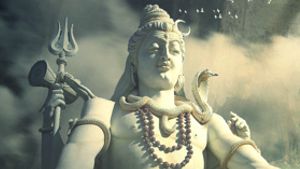


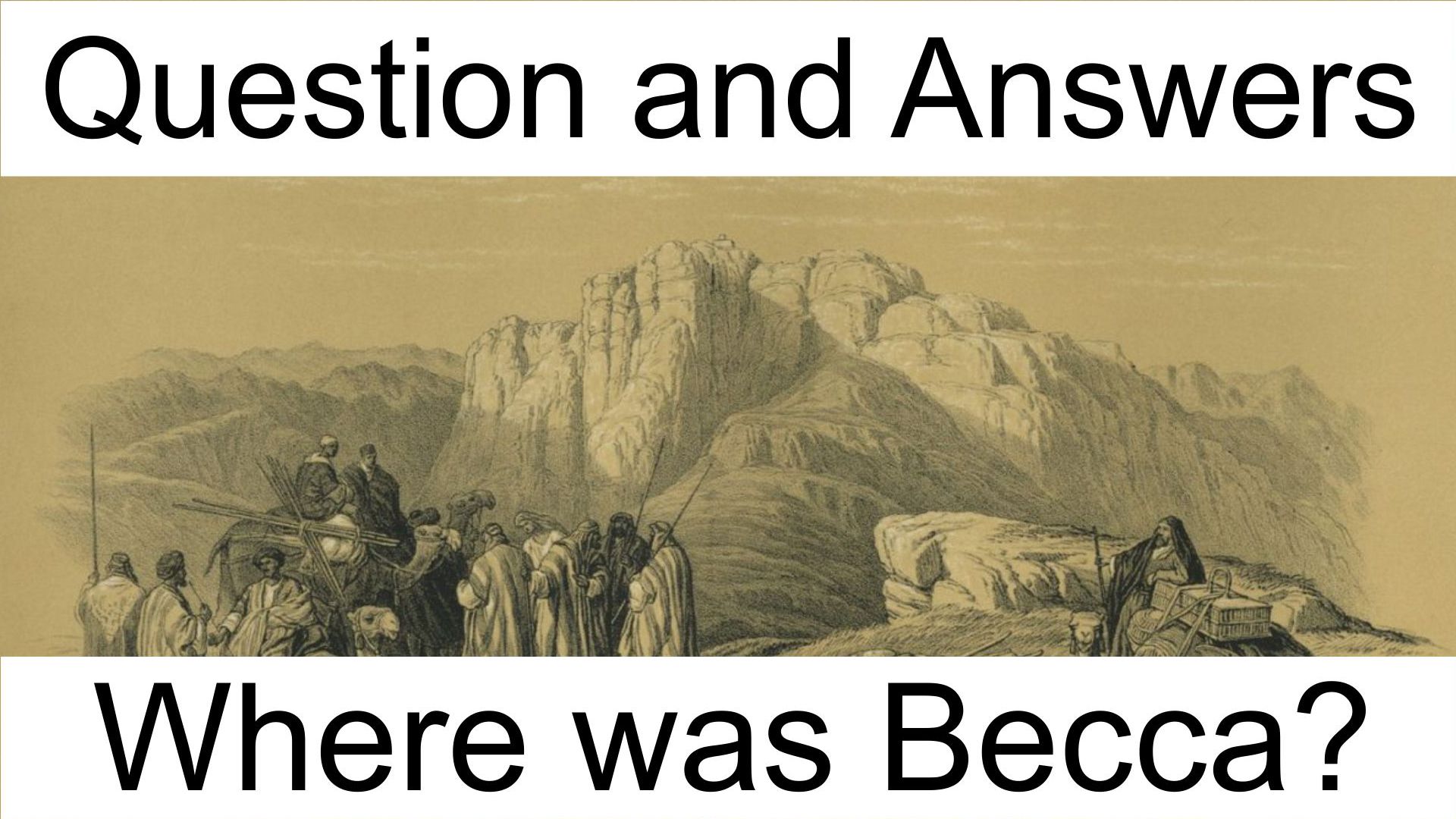

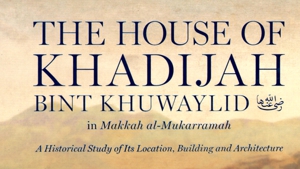
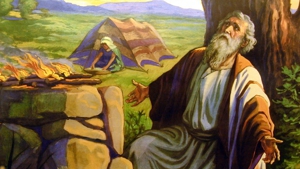
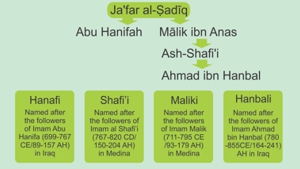

Page Discussion
Membership is required to comment. Membership is free of charge and available to everyone over the age of 16. Just click SignUp, or make a comment below. You will need a user name and a password. The system will automatically send a code to your email address. It should arrive in a few minutes. Enter the code, and you are finished.
Members who post adverts or use inappropriate language or make disrespectful comments will have their membership removed and be barred from the site. By becoming a member you agree to our Terms of Use and our Privacy, Cookies & Ad Policies. Remember that we will never, under any circumstances, sell or give your email address or private information to anyone unless required by law. Please keep your comments on topic. Thanks!